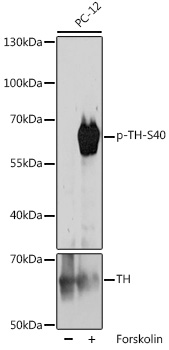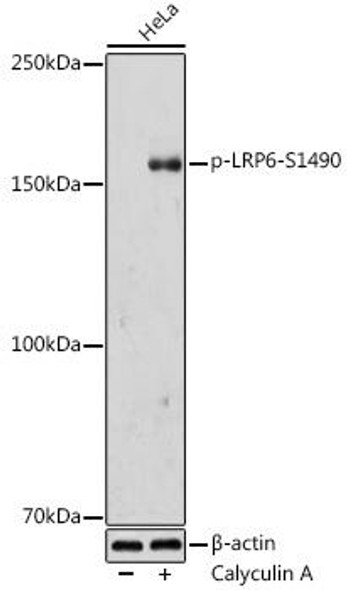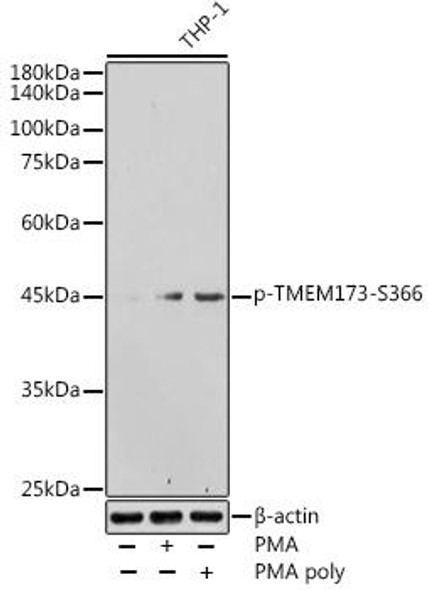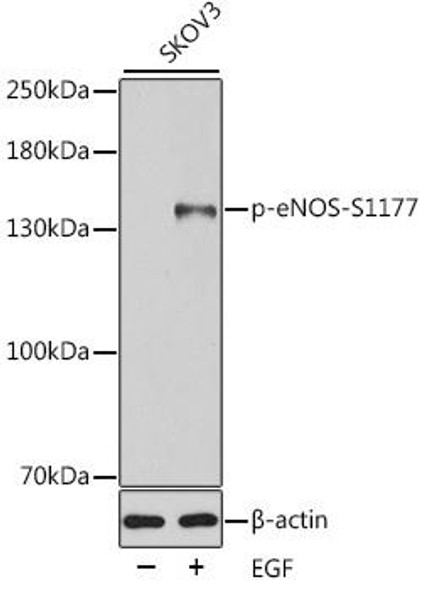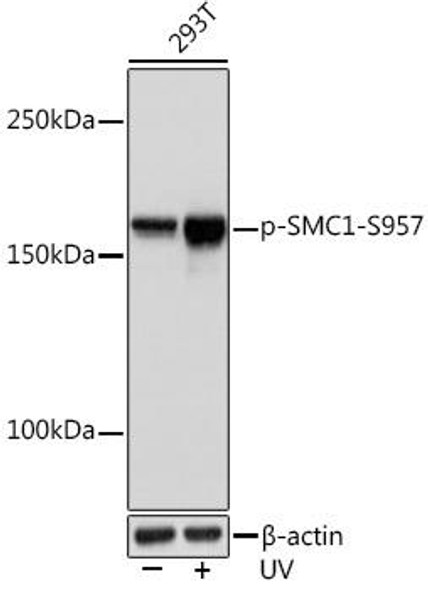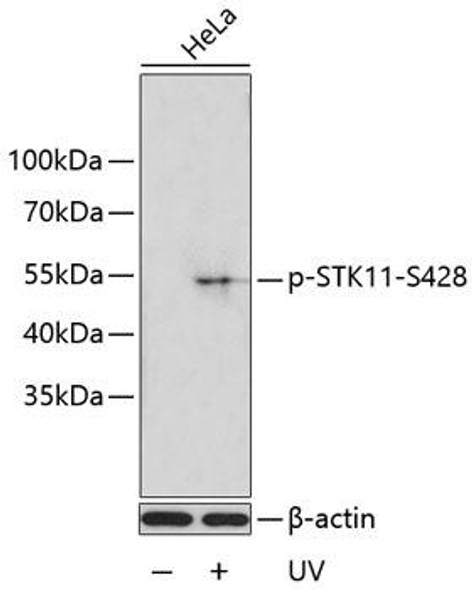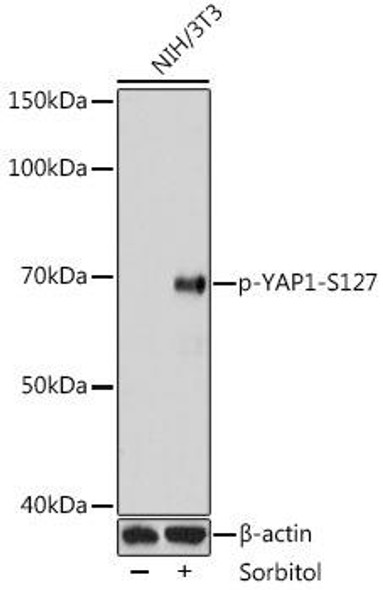Description
Anti-Phospho-TH-S40 Antibody (CABP1109)
Upon reviewing the information in the provided URL, the Phospho-TH (S40) Rabbit Polyclonal Antibody (CABP1109) is a valuable tool for researchers working in the field of neuroscience and neurology. This antibody is specifically designed to target and detect phosphorylated TH (tyrosine hydroxylase) at the S40 site in samples. The antibody, produced in rabbits, exhibits high reactivity with human samples and has been validated for use in Western blot applications.TH is a key enzyme involved in the synthesis of dopamine and other catecholamines, playing a crucial role in neurotransmission and neuronal function. Phosphorylation of TH at the S40 site has been linked to various neurological disorders, including Parkinson's disease and addiction.
By utilizing this antibody, researchers can study the phosphorylation status of TH in different cell types and experimental conditions, providing valuable insights into the mechanisms underlying these disorders.Understanding the regulation of TH phosphorylation at the S40 site is essential for uncovering potential therapeutic targets for neurological diseases and developing new treatment strategies. The Phospho-TH (S40) Rabbit Polyclonal Antibody (CABP1109) offers researchers a reliable tool to investigate the role of phosphorylated TH in neuronal signaling pathways, making it an invaluable asset for studies in neuroscience and drug development.
| Antibody Name: | Anti-Phospho-TH-S40 Antibody |
| Antibody SKU: | CABP1109 |
| Antibody Size: | 20uL, 50uL, 100uL |
| Application: | WB |
| Reactivity: | Rat |
| Host Species: | Rabbit |
| Immunogen: | A phospho specific peptide corresponding to residues surrounding S40 of human TH. |
| Application: | WB |
| Recommended Dilution: | WB 1:500 - 1:2000 |
| Reactivity: | Rat |
| Positive Samples: |
| Immunogen: | A phospho specific peptide corresponding to residues surrounding S40 of human TH. |
| Purification Method: | Affinity purification |
| Storage Buffer: | Store at -20°C. Avoid freeze / thaw cycles. Buffer: PBS with 0.02% sodium azide, 50% glycerol, pH7.3. |
| Isotype: | IgG |
| Sequence: | Email for sequence |
| Gene ID: | 7054 |
| Uniprot: | P07101 |
| Cellular Location: | |
| Calculated MW: | 44kDa/45kDa/55kDa/56kDa/58kDa |
| Observed MW: | Refer to figures |
| Synonyms: | DYT14, DYT5b, TYH, TH |
| Background: | The protein encoded by this gene is involved in the conversion of tyrosine to dopamine. It is the rate-limiting enzyme in the synthesis of catecholamines, hence plays a key role in the physiology of adrenergic neurons. Mutations in this gene have been associated with autosomal recessive Segawa syndrome. Alternatively spliced transcript variants encoding different isoforms have been noted for this gene. [provided by RefSeq, Jul 2008] |
| UniProt Protein Function: | TH: an enzyme involved in the conversion of phenylalanine to dopamine. As the rate-limiting enzyme in the synthesis of catecholamines, tyrosine hydroxylase has a key role in the physiology of adrenergic neurons. Four splice variant isoforms have been described. |
| UniProt Protein Details: | Protein type:EC 1.14.16.2; Vesicle; Endoplasmic reticulum; Mitochondrial; Amino Acid Metabolism - tyrosine; Oxidoreductase Chromosomal Location of Human Ortholog: 11p15.5 Cellular Component: synaptic vesicle; internal side of plasma membrane; neuron projection; smooth endoplasmic reticulum; mitochondrion; dendrite; melanosome membrane; cytoplasm; terminal button; perikaryon; cytoplasmic vesicle; cytosol; nucleus Molecular Function:amino acid binding; protein domain specific binding; protein binding; enzyme binding; ferric iron binding; ferrous iron binding; dopamine binding; oxygen binding; tyrosine 3-monooxygenase activity Biological Process: heart morphogenesis; heart development; response to lipopolysaccharide; dopamine biosynthetic process; phytoalexin metabolic process; norepinephrine biosynthetic process; dopamine biosynthetic process from tyrosine; catecholamine biosynthetic process; response to electrical stimulus; epinephrine biosynthetic process; neurotransmitter biosynthetic process; response to pyrethroid; response to corticosterone stimulus; response to light stimulus; anatomical structure morphogenesis; phthalate metabolic process; mating behavior; social behavior; eye photoreceptor cell development; organ morphogenesis; circadian sleep/wake cycle; response to ethanol; response to zinc ion; cerebral cortex development; response to activity; response to water deprivation; synaptic transmission, dopaminergic; response to peptide hormone stimulus; locomotory behavior; fatty acid metabolic process; response to salt stress; regulation of heart contraction; response to estradiol stimulus; sensory perception of sound; visual perception; glycoside metabolic process; response to nutrient levels; terpene metabolic process; sphingolipid metabolic process; eating behavior; response to amphetamine; multicellular organismal aging; isoquinoline alkaloid metabolic process; response to herbicide; learning; response to ether; memory; synaptic vesicle amine transport; pigmentation; response to hypoxia; embryonic camera-type eye morphogenesis Disease: Segawa Syndrome, Autosomal Recessive |
| NCBI Summary: | The protein encoded by this gene is involved in the conversion of tyrosine to dopamine. It is the rate-limiting enzyme in the synthesis of catecholamines, hence plays a key role in the physiology of adrenergic neurons. Mutations in this gene have been associated with autosomal recessive Segawa syndrome. Alternatively spliced transcript variants encoding different isoforms have been noted for this gene. [provided by RefSeq, Jul 2008] |
| UniProt Code: | P07101 |
| NCBI GenInfo Identifier: | 239938945 |
| NCBI Gene ID: | 7054 |
| NCBI Accession: | P07101.5 |
| UniProt Secondary Accession: | P07101,Q0PWM2, Q0PWM3, Q15585, Q15588, Q15589, Q2M3B4 B7ZL70, B7ZL73, |
| UniProt Related Accession: | P07101 |
| Molecular Weight: | 528 |
| NCBI Full Name: | Tyrosine 3-monooxygenase |
| NCBI Synonym Full Names: | tyrosine hydroxylase |
| NCBI Official Symbol: | TH |
| NCBI Official Synonym Symbols: | TYH; DYT14; DYT5b |
| NCBI Protein Information: | tyrosine 3-monooxygenase; dystonia 14; tyrosine 3-hydroxylase |
| UniProt Protein Name: | Tyrosine 3-monooxygenase |
| UniProt Synonym Protein Names: | Tyrosine 3-hydroxylase; TH |
| UniProt Gene Name: | TH |
| UniProt Entry Name: | TY3H_HUMAN |


